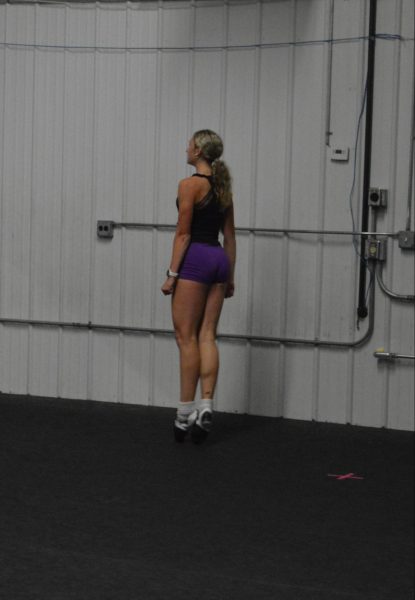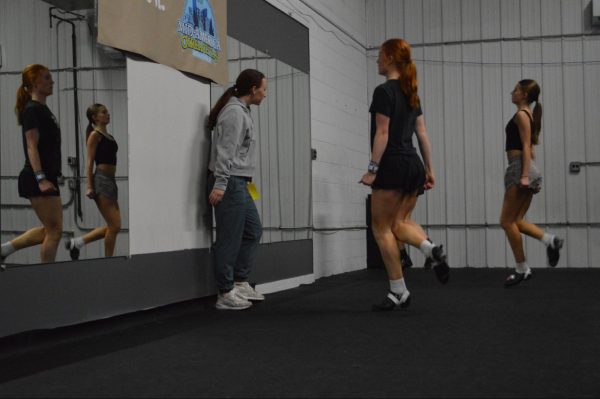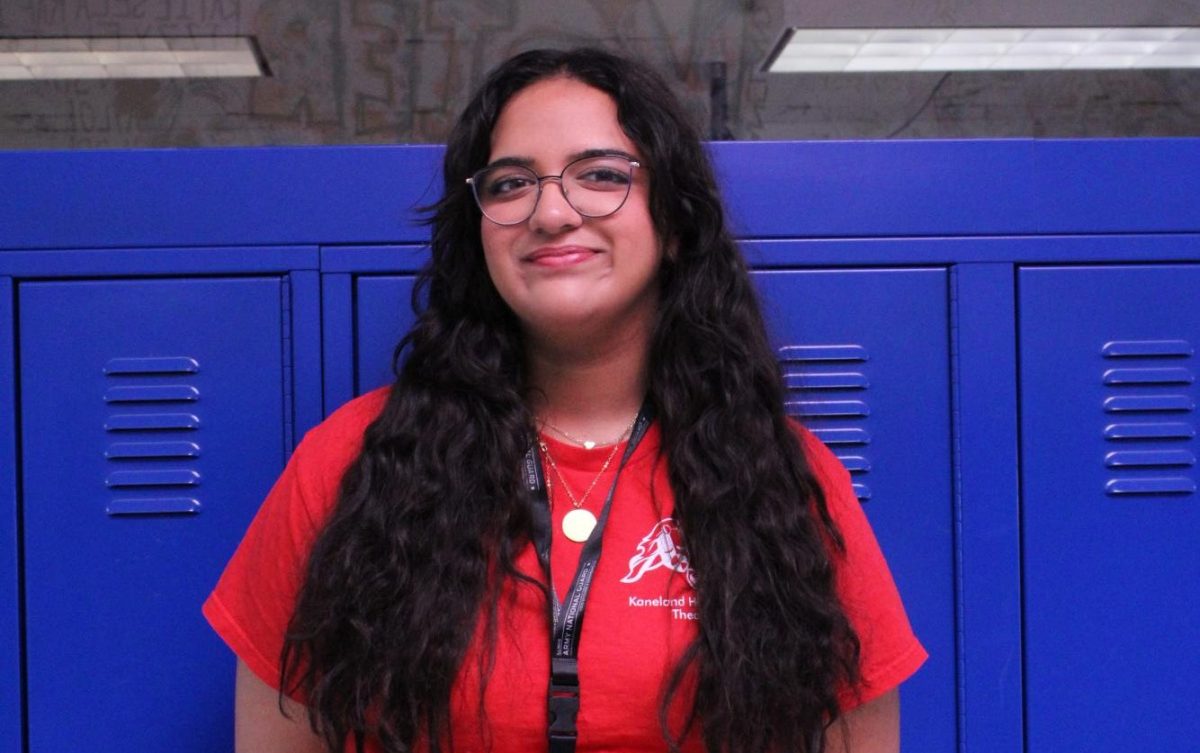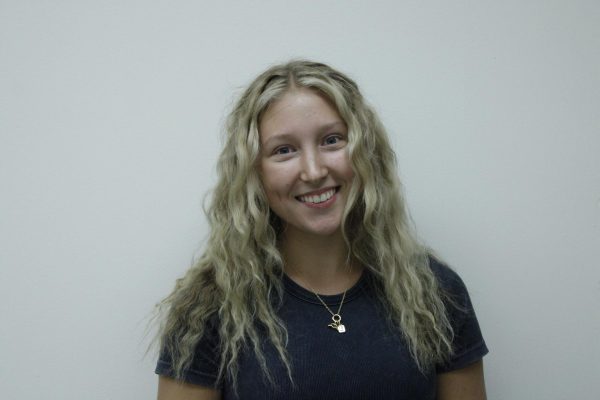When Kate Gardella stood on a big stage, scared to dance her traditional set in the age group U7, she had no idea that what she was about to do would lead to a lifetime of opportunities and excitement.
She closed her eyes, took a deep breath

and waited for the music to start. Before this, she had been crying, scared of the intense competition ahead of her and was facing a sea of intimidating judges. At this moment, her mind was blank, and she could not remember anything. Thankfully, she got through the dance and when she walked off stage, there was a moment of relief that came upon her. Since that very moment, she hasn’t looked back.
Gardella, now a 20-year-old student at Lewis University and a world medalist in Irish dance, discovered a lot about herself that day. Through her hard work and dedication, she has been able to achieve great goals and travel many places representing Hughes Farrelly Irish Dance. Today, she has learned plenty about how important it is to be physically and mentally tough.
Gardella’s biggest struggle in her dancing career has been finding a balance between working hard and overworking. Knowing how to find a healthy balance between them is important, especially when training at the highest level. With her busy schedule, she has to keep up with her mental and physical state so she can avoid feeling overtired and spent, week after week.
“You’re training long hours, and you have to keep your body healthy for months on end,” Gardella said.
Megan Kerrigan, a three-time world champion who has toured with Michael Flatley’s Lord of the Dance, is now a business owner whose goal is to help Irish dancers be
the best that they can be. She started Move with Meg in her university years after touring with Lord of the Dance. Now, she guides Irish dancers to improve their dance performances and provides a safe space for them.
Kerrigan has plenty of years of experience and many diverse fitness qualifications. She has worked as a level two fitness instructor, a level three personal trainer and a level four in diabetes management. She also has trained in strength and conditioning, indoor cycling, suspension training and barre instructing.
She knows everything Irish dancers would need to be and feel the best. “Mindfulness involves being fully present, aware of your body, and embracing the power of mental conditioning,” according to Move with Meg’s on Mindfulness and Injury Prevention: The Power of Mental Conditioning. “By developing a strong mind-body connection, dancers become more aware of their physical limits and are better equipped to recognize signs of strain or fatigue. This heightened self-awareness allows them to make conscious decisions during practice, reducing the risk of overexertion and injury.”
A factor that relates to both mental and physical aspects in all sports is stress. Just like other sports, many Irish dancers feel pressure to live up to certain standards, even if no one is actually setting them.
Amy Melaniphy-Rajca is an Irish dance instructor with Hughes Farrelly Irish dance, as well as an occupational therapist. With many years of experience in multiple fields, she understands that your mental health is just as important as your physical. With being a past Irish dancer herself, she knows the pressure to do the best and have the best placement.
“We always say that the goal should never be a placement,” Melaniphy-Rajca said. “It should be a journey but at the end of the day, all of you guys fall back on that placement.”
Stress and pressure are things that lots of dancers live with daily. They are constantly in the back of their minds, leaving every dancer pondering every decision they make, especially with upcoming goals they want to meet.
“It definitely takes a toll both mentally and physically,” Gardella said. “It can be tough to learn how to build in recovery, but also fit in with all the other demands of your life. On the mental side, it’s tough to stay motivated and keep that self-discipline about a goal that’s three months out.”
Many dancers do not even realize the full effects that stress can have on someone’s body.
“Stress is a significant contributor to dance-related injuries,” Kerrigan said. “Mindfulness techniques, such as deep breathing and meditation, help dancers manage stress effectively. When stress is minimized, the body is less susceptible to tension and muscle imbalances, creating a safer and more injury-resistant environment for dancers.”
To counteract stress, Melaniphy-Rajca says the more preparation a dancer puts in leading up to a major, the less likely they are to feel the effects of it. Even if you may still have stress, you can learn how to overcome it.
Practice at home outside of class is huge for a dancer’s success, but it is important that it is impactful practice.
“[I teach] dancers how to purposely break everything down so that they’re doing the right thing when they are practicing instead of going through the motions,” Melaniphy-Rajca said. “It’s truly just learning how to practice.”

Being able to break apart parts of a dance in simple drills can increase your chances at being more physically ready to compete and leave you feeling more mentally prepared.
The hardest thing that every athlete can relate to is defeat. Working hard for a goal, giving all of your effort and still not achieving that goal is the toughest pain that any athlete can feel. Whether it is not winning a race, letting a game-winning goal go in or being only a few placements away from making top 10, the feeling is the same.
Hurt, guilt, confusion, disappointment and resentment are all packaged into one.
Regional Oireachtas happen all around the country and even in some parts of Canada. These usually take place in the fall. These bigger competitions (known as feises) are how dancers can qualify for Nationals and Worlds.
Since the age of eight, I have gone to the Mid-America Oireachtas. Every time awards are called, there is this feeling that has been brought upon me. My heart starts beating out of my chest, sweat dribbling down my face, eyes starting to tear. The announcer then finishes calling out the top 10.
My heart sinks.
That’s how my Oireachtas have gone for the past three years. I have been called 18th, 16th and then 18th. But I always have the same goal of being in the top 10 every year. It is a painful feeling of putting in all your effort and time and feeling a sense of improvement, but then having results that do not represent that. Leading up to these events, I had been going to practices at least three times a week and giving up my Sunday mornings as well. I had given up events, family parties, vacations and even just the idea of extra sleep countless times.
Having to have the same conversations with my parents every year about whether or not this is still what I want to do is depressing in a sense that I am putting my heart and soul into something that I love and not having it love me back.
In the world of Irish dance, there are ups and downs. Within this world, though, is love and compassion for a sport that brings joy to dancers and others that watch it. When the claps start and dancers finish dancing, a sense of peace is brought onto them. Through everything, there is always love, friendship and support in a community that dancers get to call home.







